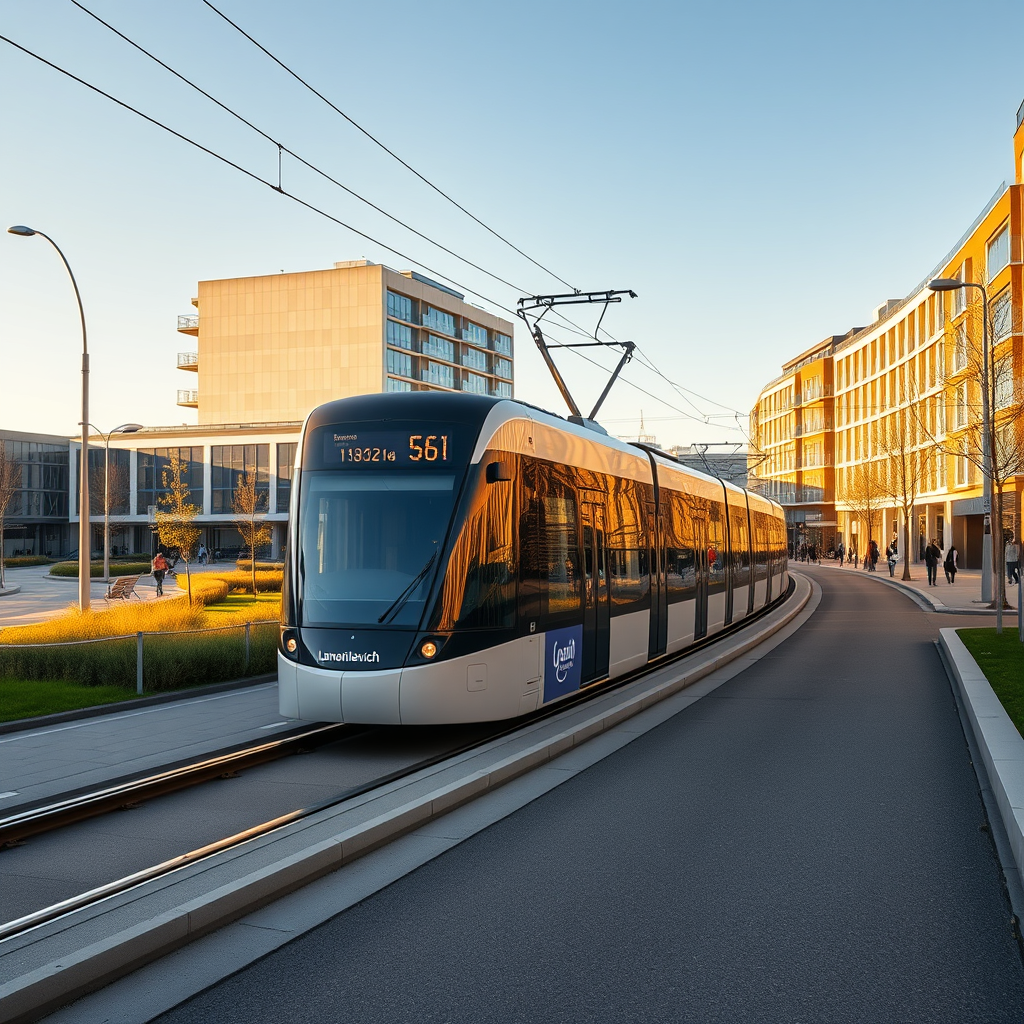Luxembourg Tram Expansion: A €135M Investment in Sustainable Mobility

Expanding Luxembourg’s Tram Network: A Strategic Investment in Sustainable Urban Mobility
Luxembourg’s commitment to sustainable transportation is exemplified by its recent approval of a €135 million (approximately $145 million USD) investment to expand its existing tram network. This expansion, a significant undertaking within the broader context of the country’s National Mobility Plan 2035, aims to increase overall transport capacity by 40% by 2035 through the development of a robust intermodal network. This article will delve into the specifics of this expansion, exploring its economic implications, its role in enhancing urban connectivity, the technological advancements integrated into the project, and its alignment with broader European transportation goals. The project’s multifaceted nature, impacting urban planning, economic development, and sustainable transportation initiatives, warrants a thorough examination. The anticipated increase in ridership, projected to significantly alleviate traffic congestion and reduce reliance on private vehicles, also necessitates an in-depth analysis of the planning, execution, and long-term sustainability of this ambitious project. The integration of Intelligent Transportation Systems (ITS) and its potential impact on efficiency and passenger experience will be crucial topics.
Network Expansion and Infrastructure Development
The approved expansion project encompasses two primary extensions: a 1.1km line connecting the central station to the Nei Hollerich district, scheduled for completion by 2028, and a 2.3km line branching from the Rout Bréck-Pafendall station to serve the new Laangfur district in Kirchberg by 2027. These extensions represent a substantial increase in the network’s reach, improving accessibility to key residential and commercial areas. The project also includes the construction of five new stations, strategically located to maximize accessibility and minimize travel times. This thoughtful approach to station placement is critical for the success of public transit initiatives. Furthermore, the project emphasizes the integration of pedestrian and cycling paths alongside the tram lines, fostering a multi-modal transportation ecosystem. This comprehensive approach not only improves public transit but also aims to create a more pedestrian-friendly and sustainable urban environment. The funding for the project is split between the state (€90 million) and the City of Luxembourg (€45 million), reflecting a shared commitment to enhancing the city’s infrastructure. The strategic planning and collaboration between different levels of government demonstrate a successful model for large-scale infrastructure development.
Economic and Social Impacts
The economic benefits extend beyond the immediate construction phase. The increased transport capacity will likely stimulate economic activity in the newly connected districts, fostering business growth and job creation. Improved accessibility will make these areas more attractive for residential and commercial development, potentially leading to a rise in property values. Furthermore, the project’s focus on sustainable transportation aligns with Luxembourg’s broader environmental goals, reducing carbon emissions and improving air quality. The social impact is equally significant. The expanded network will provide improved access to education, healthcare, and employment opportunities for residents in previously less-accessible areas. Enhanced connectivity fosters social inclusion and reduces transportation-related inequalities. The aim to improve the well-being of society through the enhancement of public space, incorporating green platforms and optimized pedestrian and cycling paths, showcases a forward-thinking approach to urban development.
Technological Integration and Intermodal Connectivity
The project integrates elements of Intelligent Transportation Systems (ITS), enhancing operational efficiency and the passenger experience. While specifics regarding the implementation of ITS are not explicitly detailed in the available information, the likely integration of technologies such as real-time tracking, passenger information systems, and optimized traffic management systems can significantly improve service reliability and responsiveness. The seamless integration of the tram network with other modes of transportation, creating a comprehensive intermodal network, is a key aspect of the National Mobility Plan 2035. This focus on intermodal connectivity is crucial for maximizing the effectiveness of the tram system, allowing passengers to easily switch between different transportation modes—such as buses and trains—to complete their journeys efficiently. This synergy between different transportation systems is essential for creating a truly integrated and efficient public transport network. The improved connection with neighboring countries, specifically through enhanced rail links with Belgium (supported by Infrabel’s €1 billion investment), further strengthens the intermodal aspect of this project.
Alignment with National and European Transportation Goals
The tram expansion is not an isolated project; it’s a key component of Luxembourg’s National Mobility Plan 2035 and aligns with broader European Union objectives for sustainable transportation. The plan’s ambitious goal of a 40% increase in transport capacity by 2035, compared to 2017 levels, reflects a strong commitment to modernizing the country’s infrastructure and creating a more efficient and environmentally friendly transport system. This strategic alignment ensures that Luxembourg’s investment contributes to broader regional and continental efforts to reduce reliance on private vehicles, improve air quality, and promote sustainable urban development. The collaboration with Infrabel, the Belgian rail infrastructure manager, highlights the cross-border nature of such initiatives and the potential for significant synergies in developing integrated, high-capacity transport networks across national boundaries. The ongoing investments in rail infrastructure across Europe underscore a commitment to interconnectivity and sustainability in transport systems.
Conclusions
Luxembourg’s €135 million investment in expanding its tram network represents a significant step towards achieving its ambitious National Mobility Plan 2035 goals. The project, encompassing two major line extensions and five new stations, will dramatically increase the network’s reach and capacity, enhancing accessibility to key districts and promoting sustainable urban development. The strategic allocation of funding, the focus on multi-modal integration with pedestrian and cycle paths, and the planned integration of Intelligent Transportation Systems (ITS) showcase a comprehensive and forward-thinking approach. The economic benefits are expected to be substantial, stimulating economic activity, creating jobs, and increasing property values. The social impact will be equally profound, improving access to essential services and reducing transport-related inequalities. This project’s success hinges on effective project management, careful integration of ITS, and the seamless collaboration of various stakeholders. The integration of this project into broader European transport initiatives further emphasizes its significance, contributing to the overall objective of creating a sustainable and efficient pan-European transport system. The expansion project transcends a mere infrastructure upgrade; it is a vital component of Luxembourg’s vision for a future where sustainable urban mobility is a cornerstone of economic and social progress. The long-term success of the expansion will be dependent on ongoing maintenance and adaptation to evolving transportation needs, ensuring that the investment continues to deliver its projected benefits to the citizens of Luxembourg for many years to come. The commitment to intermodal transport, enhancing connections with neighboring countries through improved rail links, shows a broader vision that prioritizes efficient and integrated transport across regional and national boundaries. The project stands as a model for other urban centers seeking to invest in sustainable and efficient public transit solutions, thereby improving the quality of life for their citizens.





